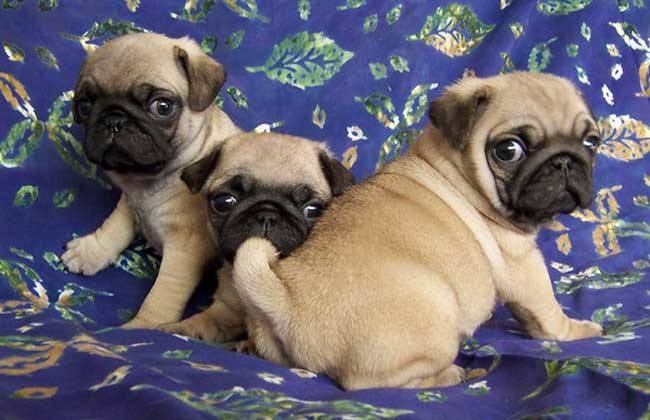Pug
IUCN
LCBasic Information
Feature
The Pug has a black face with many wrinkles and a gentle personality.
Distribution and Habitat
Originated from China
Appearance
The Pug is small, compact and well-proportioned, with well-developed muscles. Its head is slightly large and round, with a short and slightly square muzzle that tilts upwards, and most of the lower jaws are protruding and biting. The nose is flat and black, and the muzzle is not sharp. The face is wrinkled, the muzzle is short and protruding, and there are deep wrinkles on the forehead and muzzle, and the forehead segment is obvious. The eyes are dark and shiny, large and round, slightly bulging, and the eyes are bright and cute, but the distance is wide, giving people a feeling of being sad and worried. The ears are small and thin, facing forward, triangular, soft, and drooping to the outside, and they feel like velvet. There are two types of rose ears and button ears, and the latter is popular. The body is short and strong, with a wide and deep chest, rich back muscles, short and straight limbs, vertical forelimbs, strong and powerful hind limbs, and some forelimbs are slightly curve
Details
The Pug is charming and elegant. It was officially named "Pug" in the late 18th century. It got its name because its facial expression resembles a small monkey called "Pug". Regarding the origin of the Pug, some experts believe that this dog came from my country and originated from the short-haired breed of the Pekingese. Later, it was introduced to Japan and Europe and became a pet for the nobility.

The Pug was probably slightly larger in its early stages of development in China about 400 years ago. Dutch sailors brought the breed back from China in the 16th century. William III brought the dog to England when he ascended the throne in 1689. This is a breed with a stable temperament, showing a stable, cheerful, charming, noble, friendly and lovely temperament.
There is a bulldog gene in the Pug's genes, because they are the earliest combination of Pugs and Bulldogs, so the appearance of Pugs is similar to that of Bulldogs. Of course, Bulldogs are also pet dogs that symbolize status and identity of the European royal family. Because they are loved by the European royal family and nobles, they are spread all over Europe.
However, Pugs have not inherited the fighting nature of Bulldogs at all, because Pugs have always been companion dogs. Pugs are friendly, curious, playful, flexible, but not alert. Because Pugs are not so competitive and have a weak sense of resistance, they are very suitable for breeding in cities.
Pugs have strong self-esteem, and sometimes they are stubborn because of it. If they feel that they have done nothing wrong, they will argue with you in their own way to express their dissatisfaction. For example, they will yell at you, which is a unique way for Pugs to be stubborn.
Protect wild animals and eliminate game.
Maintaining ecological balance is everyone's responsibility!








